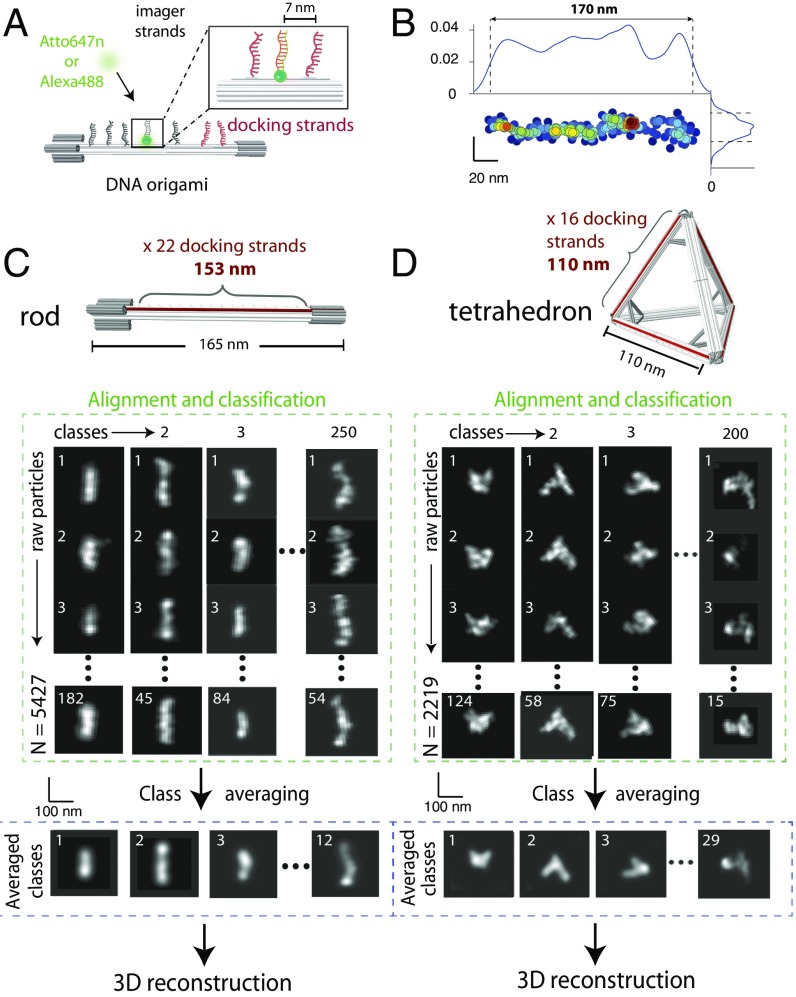Fig. 1.
Self-assembly of DNA origami and single-particle averaging. (A) Schematic representation of DNA origami and DNA-PAINT strategy. Docking strands were positioned on the surface of the origami at regular spacings; imager strands were localized with nanometer precision. (B) Single, surface-bound DNA origami can be visualized by DNA-PAINT (Left and Right). The typical profile width was 14 nm (Bottom). (C and D, Top) Schematic representations of linear rod and tetrahedron. (Bottom) Raw particles were reoriented and retranslated, aligned, and classified to obtain class averages. Total number of raw particles from over 20 independent experiments: 5,427 for linear rod and 2,219 for tetrahedron.

